How impactful is it to try to become a grantmaker focused on pressing world problems? Encouraged by Nuno’s tweet, I spent a couple of hours trying to find out.
TL;DR
I estimate the expected x-risk basis points reduced for the prospective marginal grantmaker to be 0.12 (with enormous error bars and caveats).
Background
Epistemic status: I have zero grantmaking experience and haven’t even double-checked my numbers; please do not use this post for anything that relies on it not containing serious errors.
My estimand is something like: “expected x-risk basis points reduced for the prospective marginal grantmaker doing their best to benefit the most pressing problems at an Open Philanthropy-equivalent organization.”
BOTEC
Chance of getting a job
I make guesses of
- the number of employers that might be possible to work at,
- the Open Philanthropy-equivalentness of employers, and
- the probability of acceptance for any particular job application.
Multiplying these factors together gives me a probability of succeeding in getting an Open Philanthropy-equivalent grantmaking job offer at (at least) one of the Open Philanthropy-equivalent organizations of 7% (on average). Seems not-crazy.
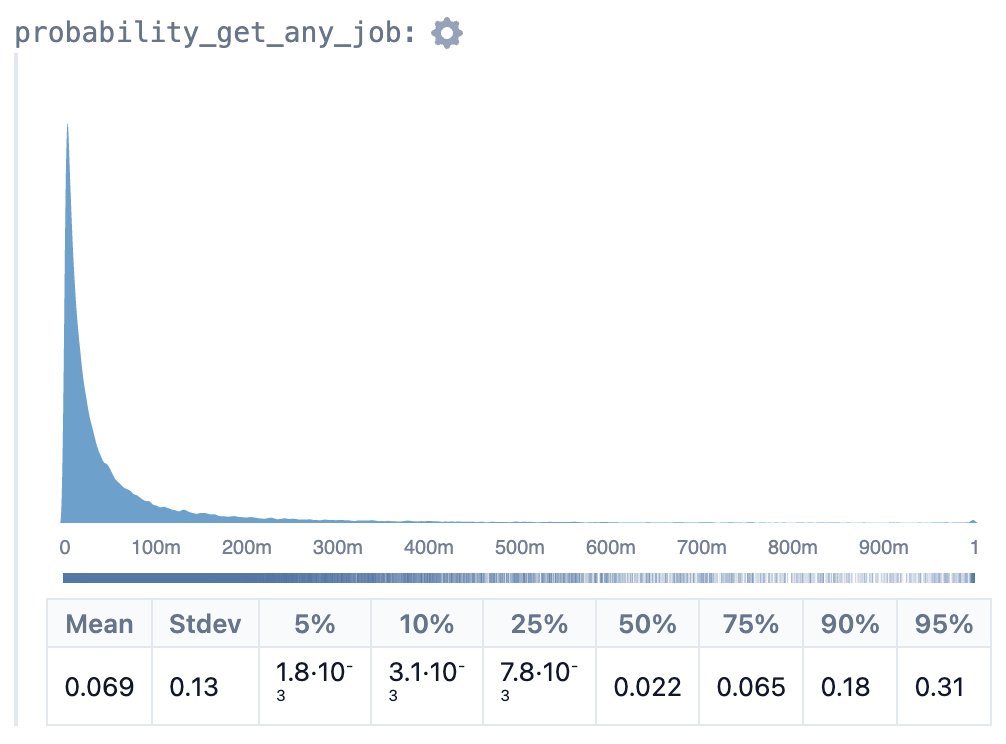
Impact from grantmaking
I used recent data from these charts to guess the total longtermist grants given per year by Open Philanthropy-equivalent organizations going forwards.
The fraction of grants a prospective grantmaker is responsible for is given by the reciprocal of my guess of the number of grantmaker-equivalents at Open Philanthropy-equivalent organizations. (I apologize for phrasing...)
Only a fraction of the grants that a grantmaker is responsible for can be counterfactually attributed to them — some grants would make for such obvious decisions that the counterfactual grantmaker would have acted identically. I convert the vibes from this post into a fraction of grants worth deliberating over (on average, 13%).
I set the ratio of skill vs. a replacement grantmaker to be mean 1.2 with mass either side of 1. This reflects the fact grantmakers may be better or worse than their counterfactual replacement, but also that on average their being hired implies that they are expected to perform better.
Taken together, I get a mean estimate of $5.7m for the Open Philanthropy-equivalent resources counterfactually moved by grantmaking activities of the prospective marginal grantmaker, conditional on job offer.
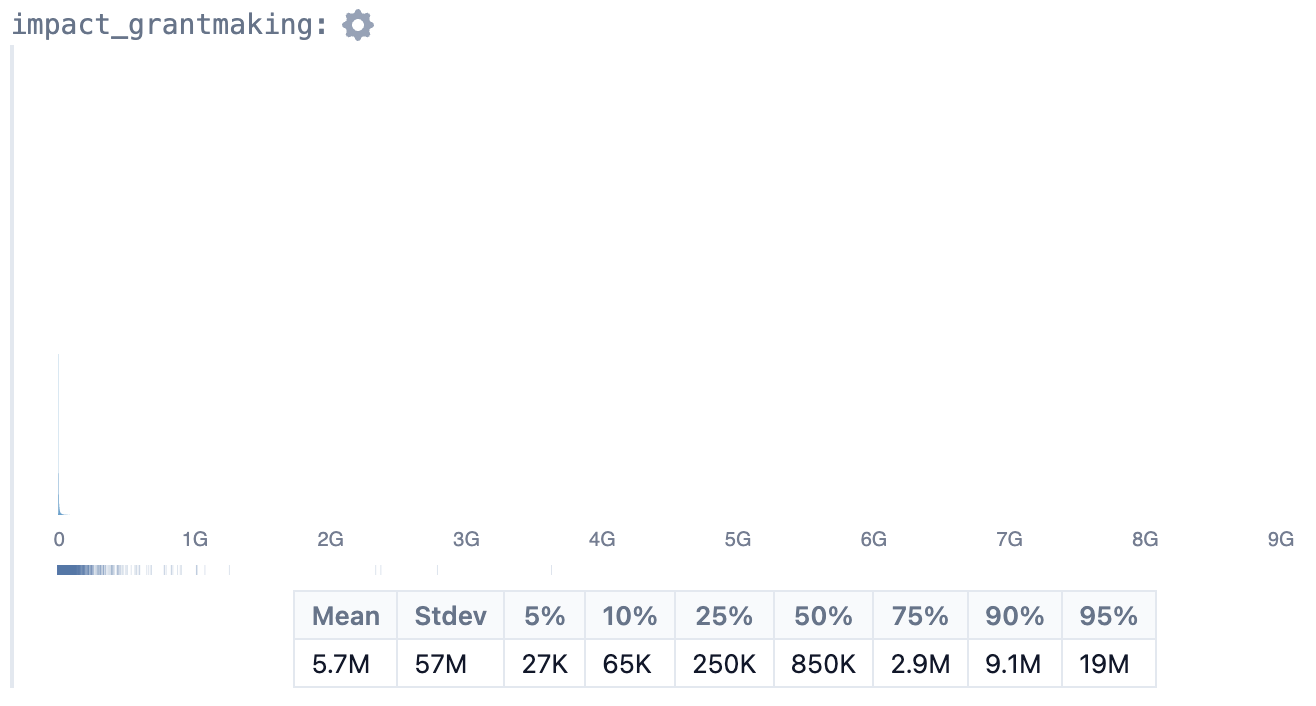
Impact from other paths
Linch claims that some fraction of grantmakers' impact comes from things that look like ‘improving all grantmaking processes at their organization,’ ‘improving the work/selection of their grantees,’ and other paths that I did not attempt to categorize. I add the categorized paths in to my estimate of impact.
My mean estimate for the Open Philanthropy-equivalent impact from non-grantmaking activities sums to around $30m (equivalent). ~70% of this comes from improving all grantmaking, ~30% from improving grantees.
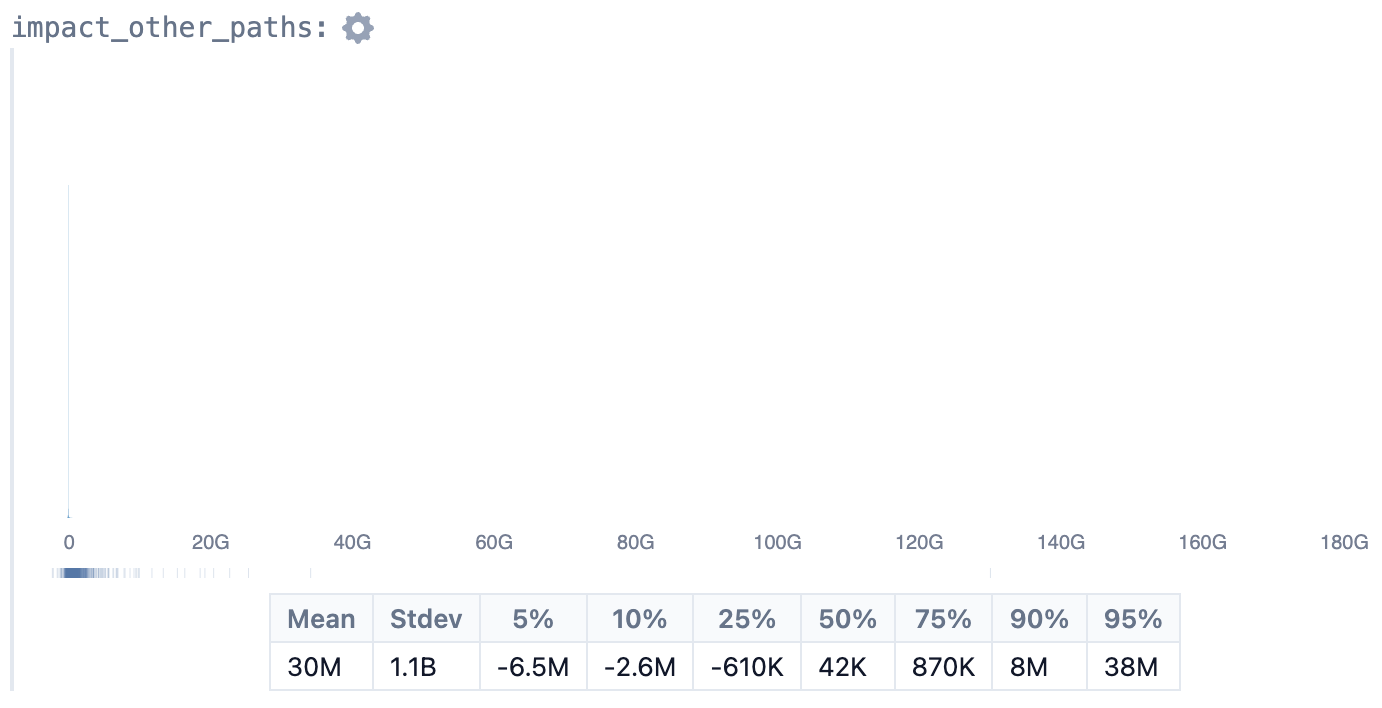
Units
In order to calculate impact for the whole career path, I multiply annual impact by the number of years employed as a grantmaker.
Finally, to convert impact into terms of x-risk basis points, I divide by USD per x-risk basis point. Estimates for this quantity come from this comment.
Putting everything together
All considered, I get an estimate of the x-risk basis points reduced by the prospective marginal grantmaker of 0.12 in expectation. There is a ~27% chance of having a negative counterfactual impact (vs. replacement grantmaker) and a ~5% chance of having an impact greater than expected.
For full details, see my code in the appendix.
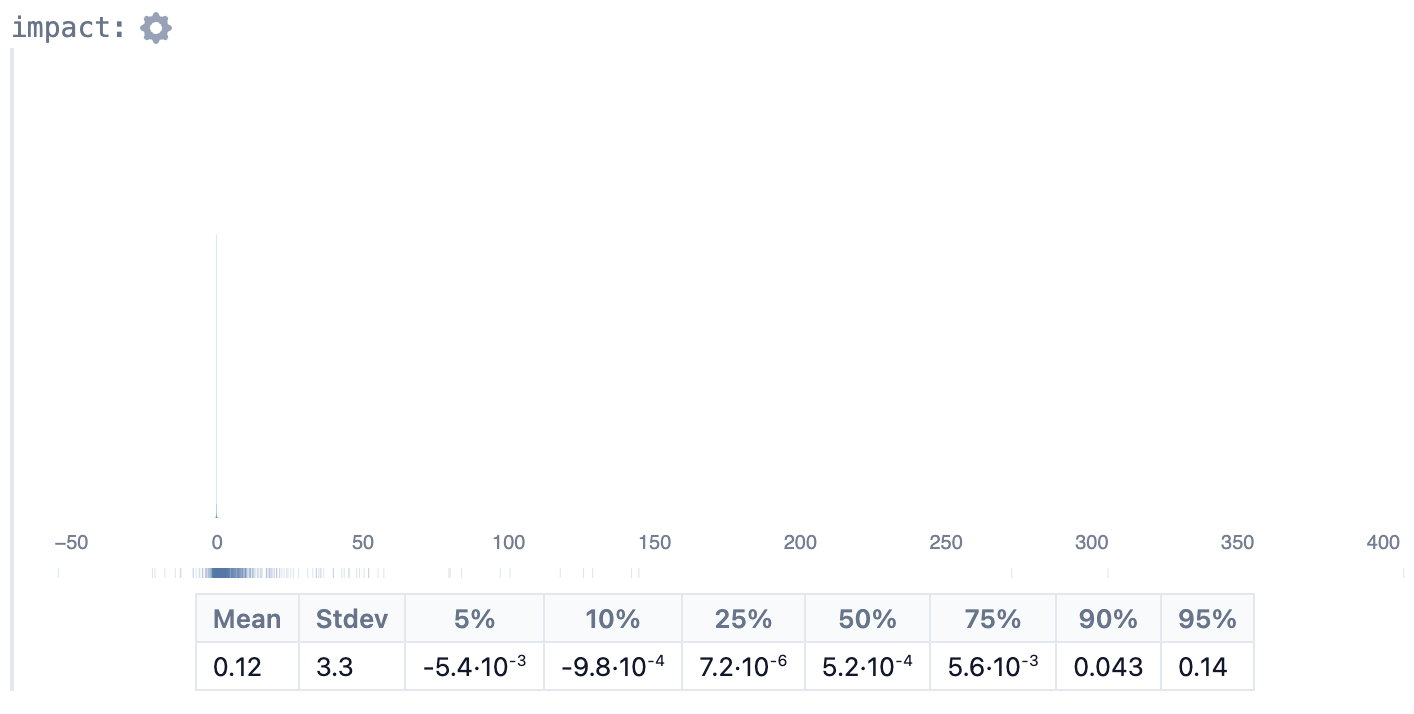
Limitations
There might be over- or under-counting issues. For instance, I guess that the average number of years employed will be 11. This corresponds to me excluding the impact of the grantmaker’s post-grantmaking career from my definition of career path. Several possible implementation choices seem valid here.
It goes without saying that personal factors (chance of getting jobs, grantmaker skill, etc.) could change the numbers significantly. As could cause area, changes in funding landscape, changes in Open Philanthropy-equivalentness of other organizations, etc..
I’ve ignored the Shapley values debate.
Several of the distributions that I have made guesses for could quite easily come from actual data instead — e.g. the chance of getting any particular grantmaking job, and Open Philanthropy grant amounts.
Appendix
Here’s the code! You can mess around with it in squiggle playground.
// chance of success
n_organisations_available = truncateLeft((3 to 30) - 1, 0)
organisation_op_equivalent = 0.01 to 1
n_op_equivalent = 1 + (n_organisations_available * organisation_op_equivalent)
probability_get_particular_job = truncate(0.001 to 0.1, 0, 1)
probability_get_any_job = 1 - (1 - probability_get_particular_job)^n_op_equivalent
// share of grants receive credit for
op_annual_grants = mx(normal(200M, 50M), 100M to 1B, 30M to 3B, [0.5, 0.2, 0.3])
fraction_of_annual_grants = 1 / truncateLeft(mx([1 to 100, 10 to 100, 1 to 1000], [0.2, 0.5, 0.3]), 1)
// impact from grantmaking
fraction_worth_deliberating = truncate(normal(0.1, 0.1), 0, 1)
skill_vs_replacement_grantmaker = 0.3 to 3
impact_grantmaking = op_annual_grants *
fraction_of_annual_grants *
fraction_worth_deliberating *
skill_vs_replacement_grantmaker
// other paths to impact
improve_grantmaking_process = op_annual_grants *
(mx([normal(1, 0.003), 1 to 3, 1 to 10], [0.98, 0.01, 0.01]) - 1)
improve_grantees = op_annual_grants *
fraction_of_annual_grants *
(mx(normal(1, 0.003), 0.3 to 3, 0.3 to 10, [0.7, 0.2, 0.1]) - 1)
impact_other_paths = improve_grantmaking_process + improve_grantees
// expected years employed, ignoring exogenous x-risk
years_employed = truncateRight(1 to 50, 60)
// conversion to basis points of existential risk reduced
usd_per_basis_point_xrisk = truncate(mx(normal(300M, 300M), 30M to 1B), 30M, 3B)
// final estimate
impact = probability_get_any_job *
(impact_grantmaking + impact_other_paths) *
years_employed /
usd_per_basis_point_xrisk
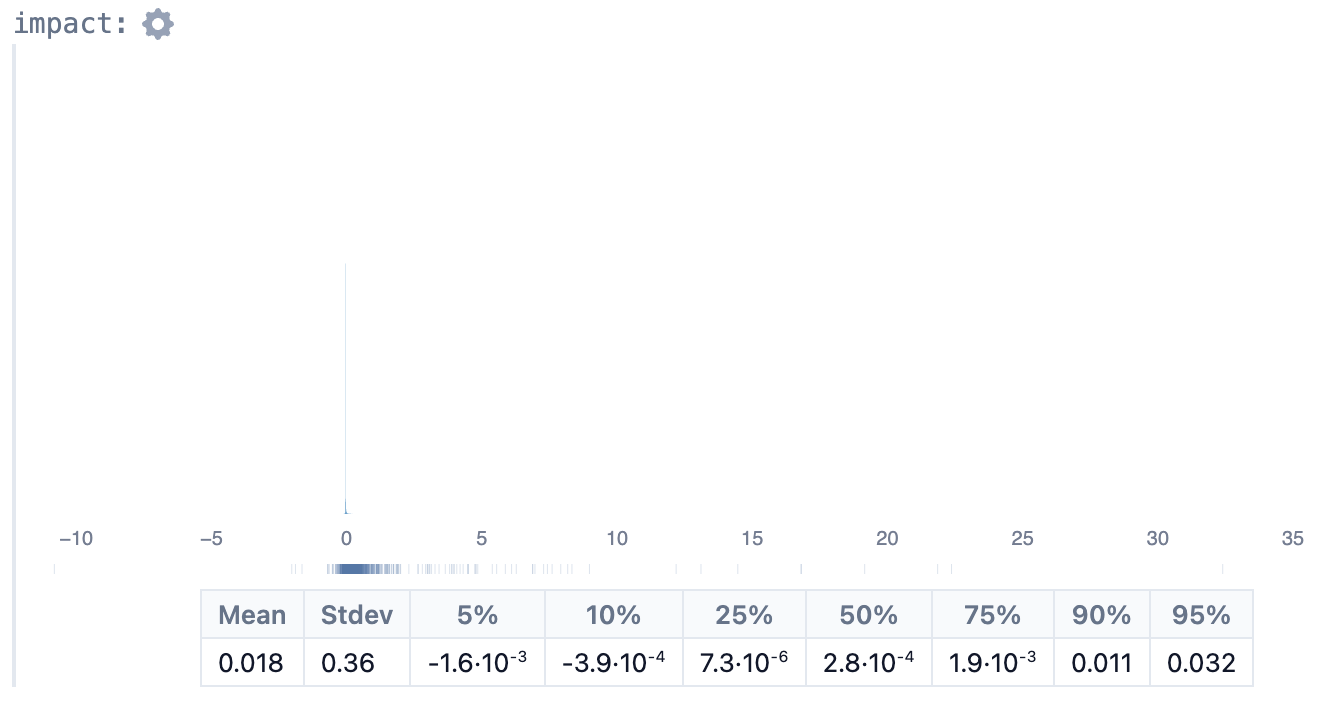
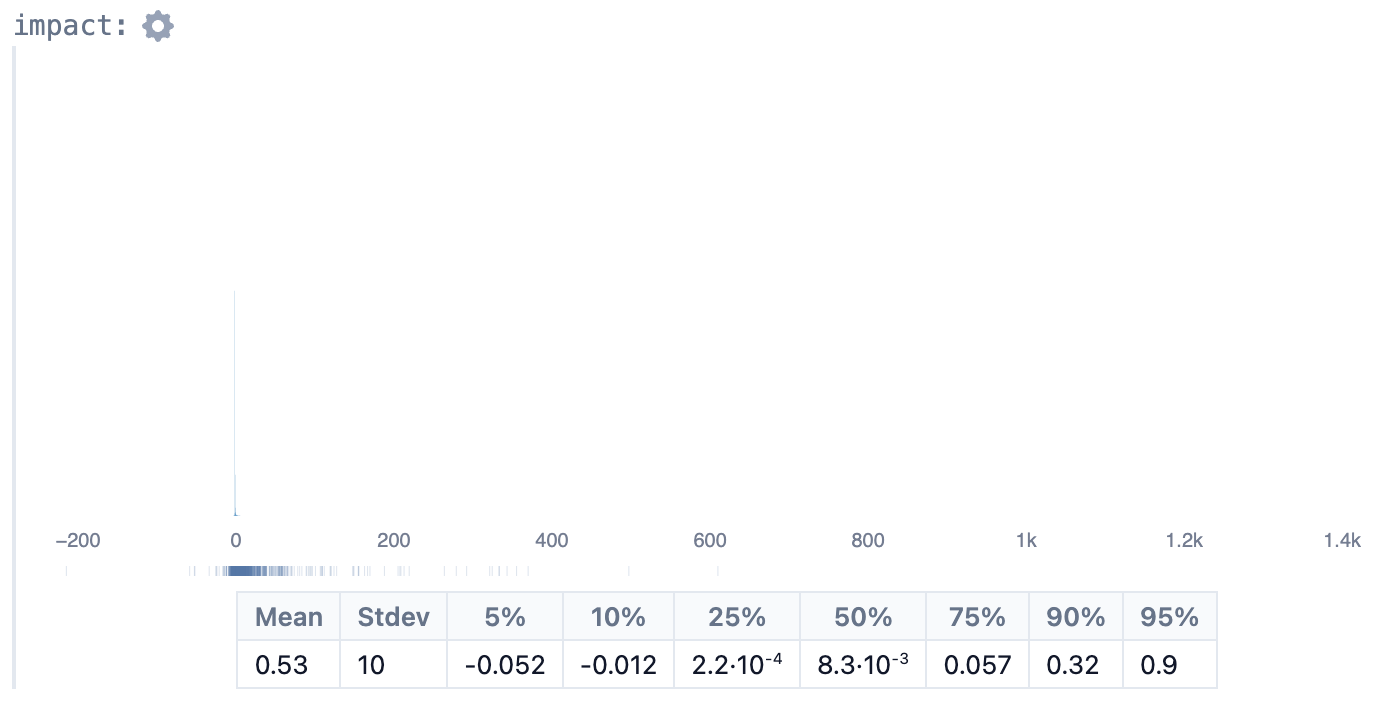
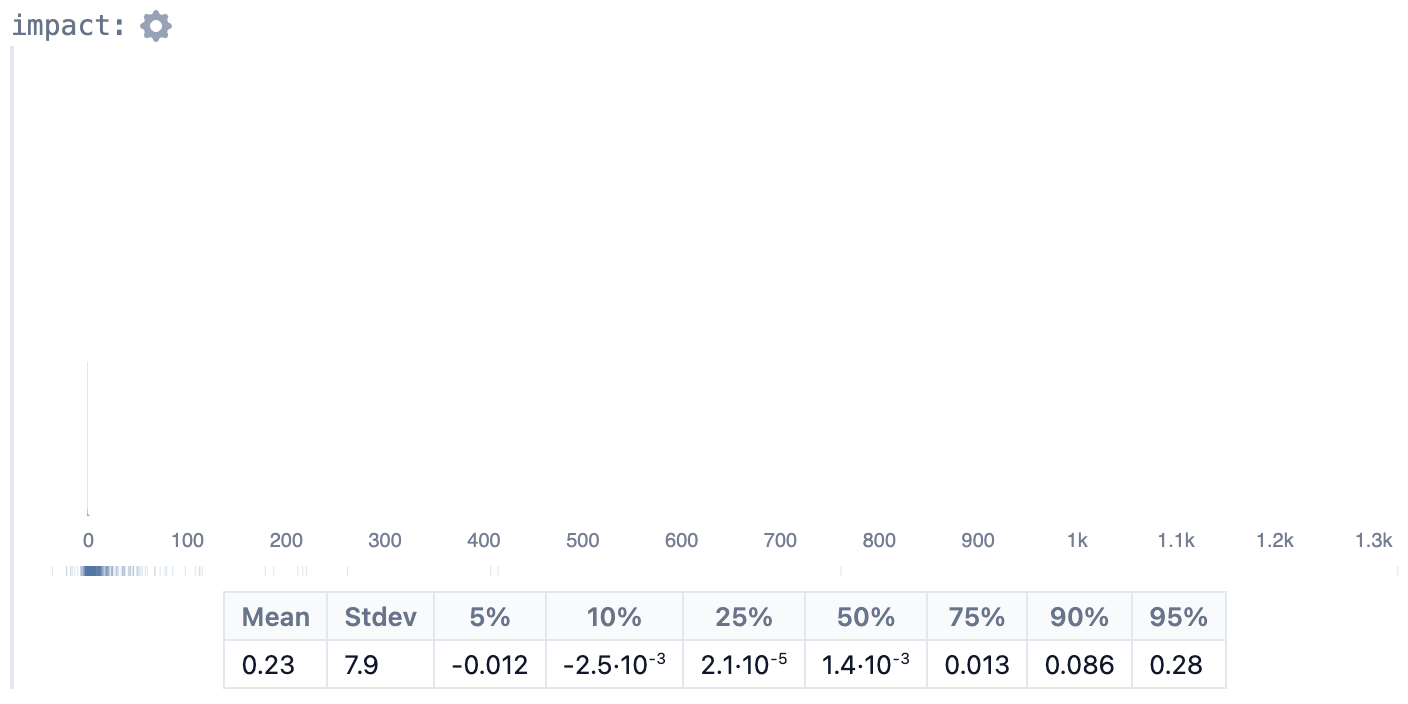
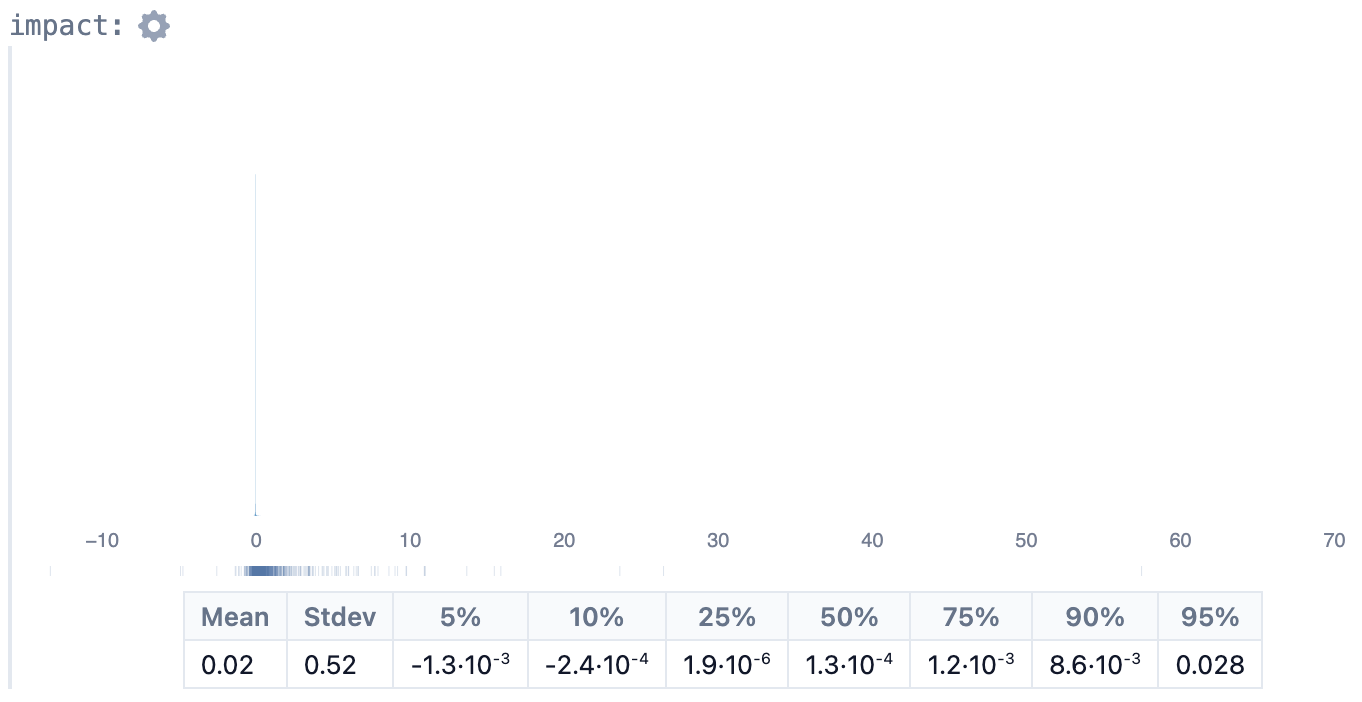
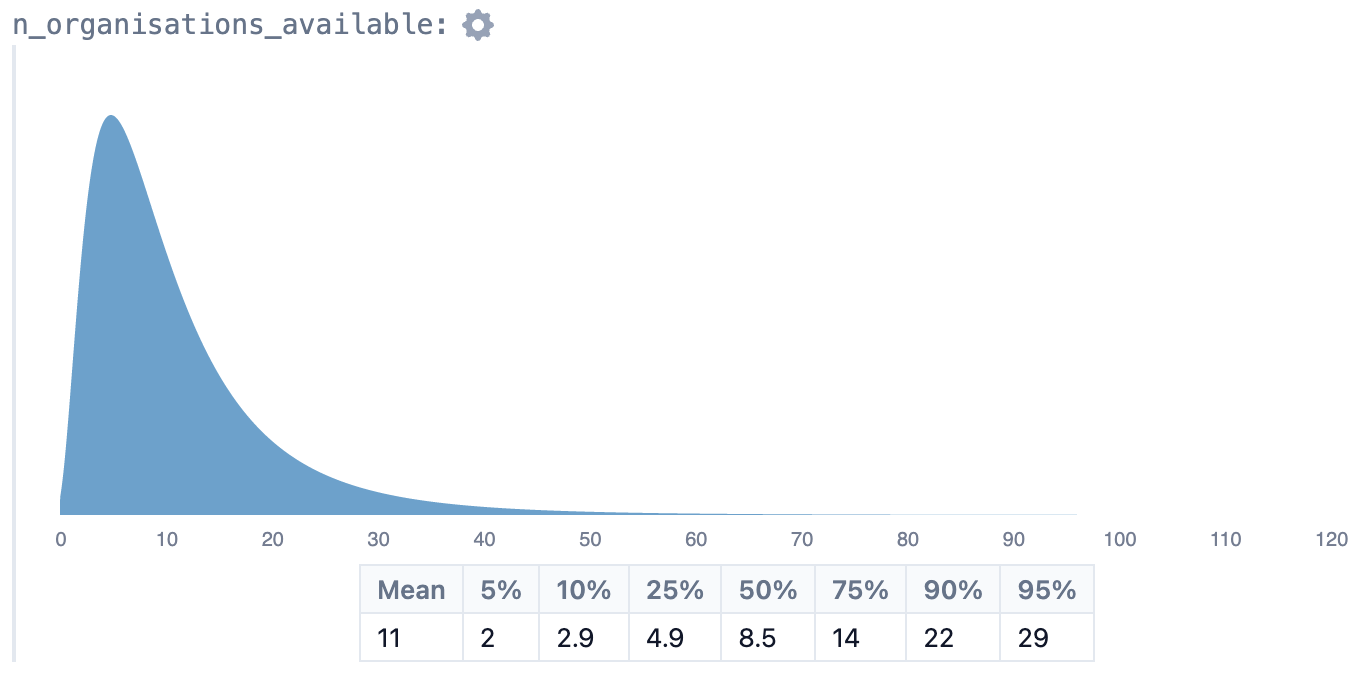
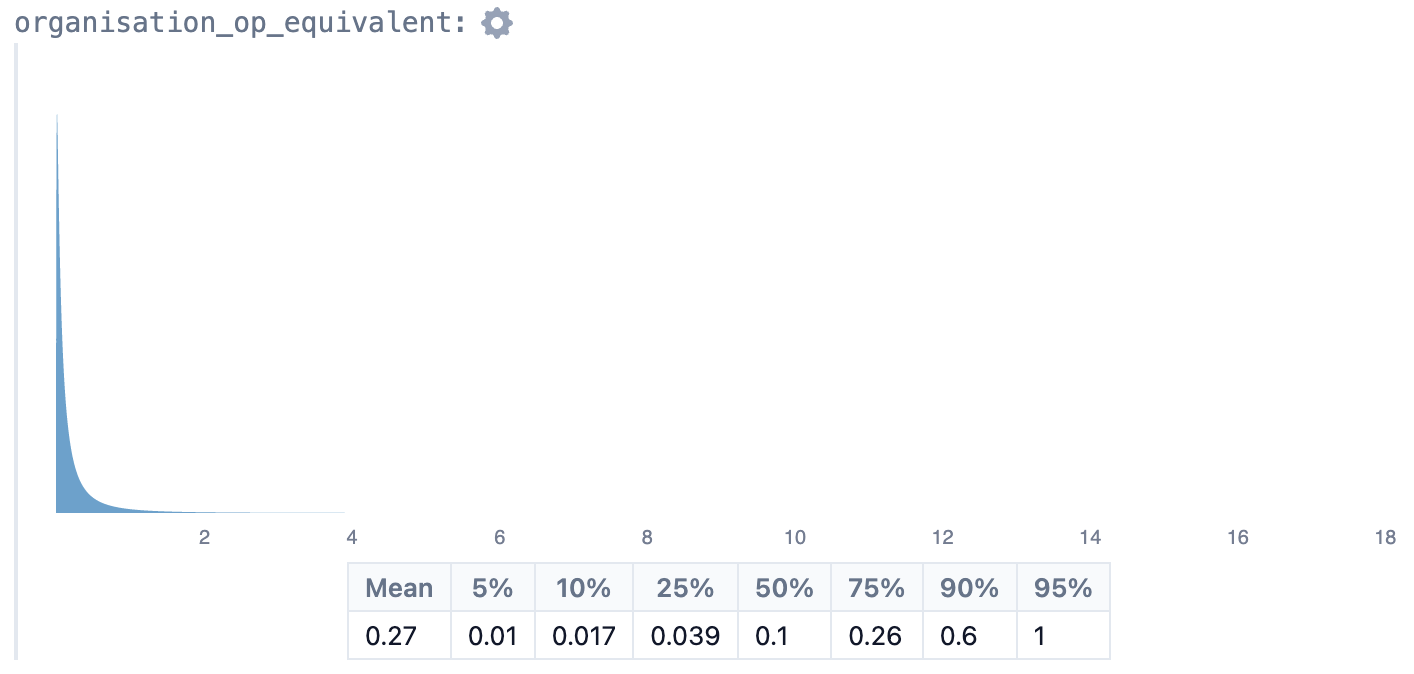
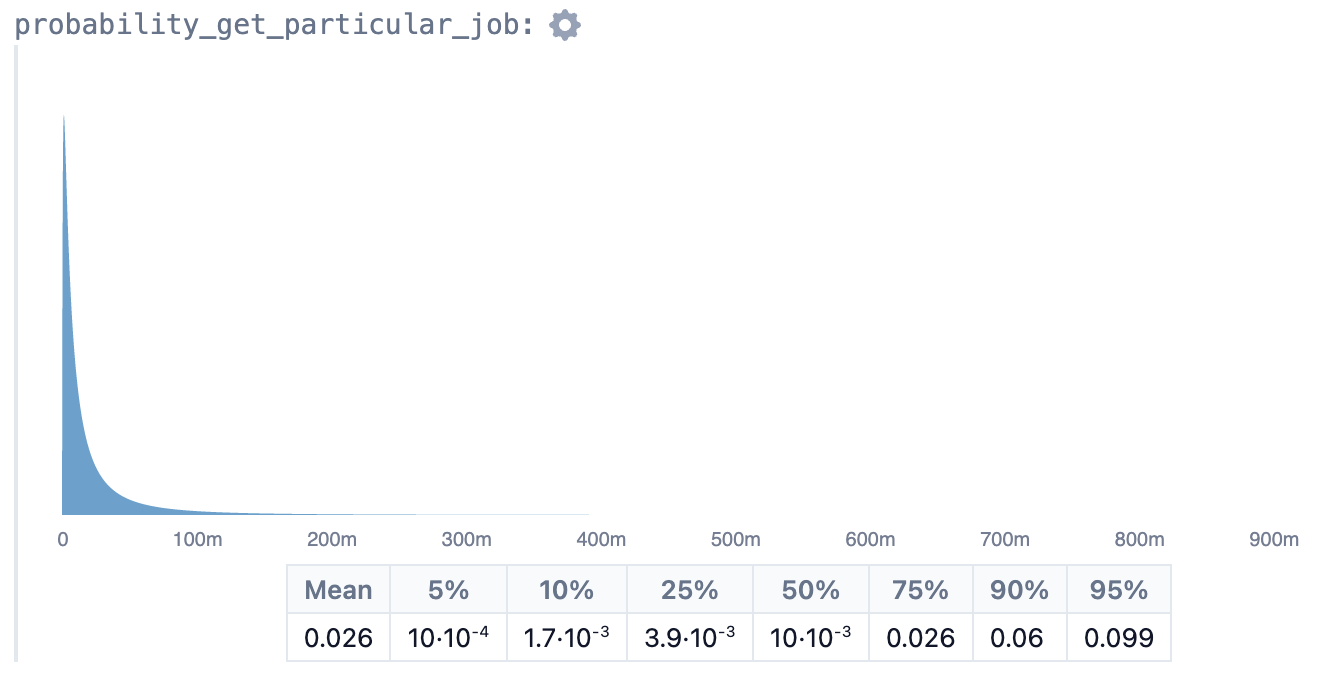
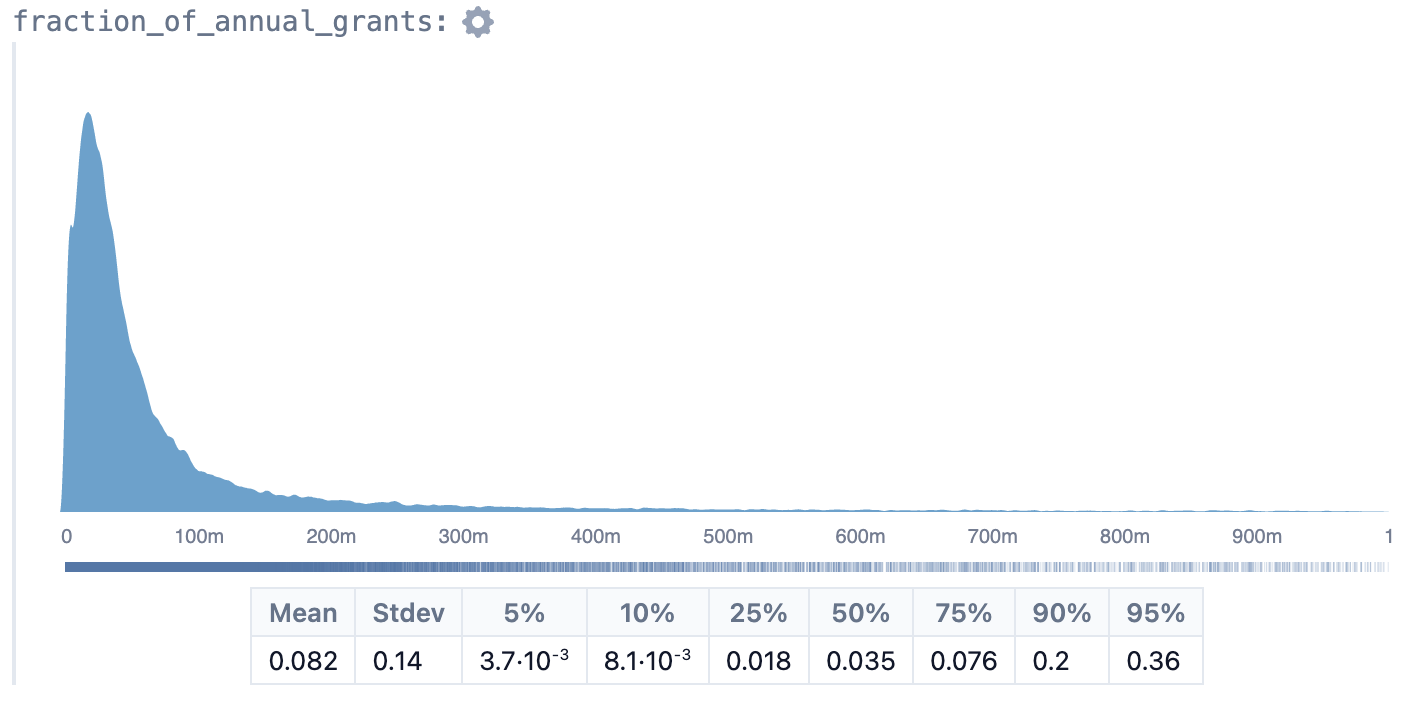

Good post (I think, without checking numbers).
probability_get_any_job depends a lot on the person. Also note that if you attempt to do grantmaking but don't get a job, you still get most of the impact of your default career. So the "try to do grantmaking" action is worth a lot more than P(become a grantmaker)*EV(grantmaking).
I suspect that usd_per_basis_point_xrisk is doing a lot of work, and different people will have pretty different beliefs about it, and maybe in particular the best grants are extremely likely to be made without the marginal grantmaker.
Makes sense! Would add another 0.5 orders of magnitude vs. the unconditional estimate, so ~2 x-risk basis points.